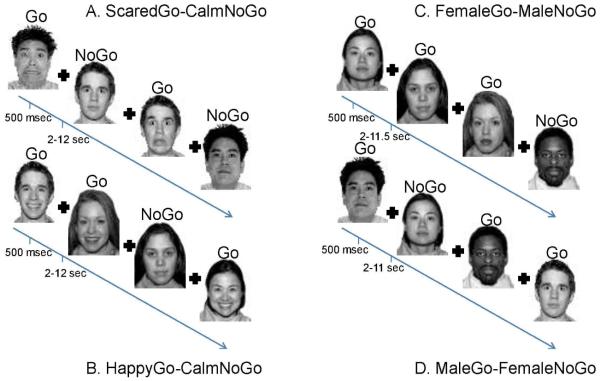Figure 1. Emotional Go-NoGo Task.
Participants completed the Emotional Go-NoGo fMRI task in the scanner. There were four runs of the task: two emotional runs (A and B) and two control runs (C and D). Emotional runs always followed controls runs, but the order in which happy and scared runs appeared was counterbalanced across participants. The task instructions were to respond as quickly and as accurately to the target (go) face that was specified for a particular run and to not respond when a non-target (nogo) face appeared. Each face was presented for 500 milliseconds with a 2-12 second jitter used as the intertrial interval for the emotional runs of the task, and 2-11.5 second jitter used for the control runs of the task. A fixation cross appeared during the jitter period.

